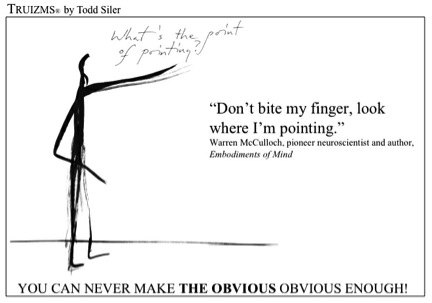Obamacare’s Games For Stakeholders And The Unintended Consequences
Stanley
Feld M.D.,FACP,MACP
I can’t help remembering
Nancy Pelosi’s famous statement, “We have to pass the bill to find out what is
in it.”
The public didn’t like
Obamacare to begin with.
Each day “we are finding out what is in it.”
Each day it gets worse
despite the fact the President Obama keeps saying Obamacare is great and will save us
money. Americans do not believe him.
If you are a big
government control advocate, the ideology of Obamacare could be applauded.
Practically, Obamacare is
naïve and an impending “train wreck.”
Unintended consequences keep appearing because of defects in the theory and poor
design.
Patients, the healthcare
care insurance industry, physicians, hospital systems, and drug companies could
have predicated these unintended consequence if they knew what was it the bill
at its passage. Those who did understand the Accountable Care Act (Obamacare)
hated the act at its passage.
Many of my progressive
friends blame the problems Obamacare is having on Republicans.
I think they are getting
that idea because the New York Times and its editorial op-ed writers that are making
that claim. However, the New York Times offers no concrete proof.
Obamacare is failing on it
own. Its implementation gets harder and more expensive each day.
On July 12, James Hoffa of the Teamsters (1.4
million members), Joseph Hansen of the Food and Commercial Workers (1.3 million
members) and D. Taylor of UNITE-HERE (200,000 members, mostly culinary and
hotel workers) wrote to complain about the president's Affordable Care Act.
Obamacare is destroying
the 40-hour workweek unions worked many years to achieve. Employers are hiring part time employees to replace full
time employees that had been laid off because of the recession.
Employers are doing this
to avoid a $2,000 penalty for not providing healthcare insurance for each employee.
The majority of the job
growth figure of 195,000 for June consisted of part time job growth.
Union
leaders are correct. Obamacare "creates
an incentive to keep employees’ work hours below 30
hours a week."
After
all, employers can avoid a $2,000-per-worker penalty if they don't provide mandated insurance as long as employees
work fewer than 30 hours a week.
" Union leaders have realized—too late—that
ObamaCare will affect the livelihood of millions of workers who wait tables,
wash dishes, clean hotels, man registers, stock shelves and perform other tasks
that can be limited to shifts of less than 30 hours a week."
White
house Press Secretary Jay Carney said it "is
belied by the facts."
Once
again he was lying. He used 2010 Bureau of Labor Statistics numbers to answer
the complaint.
These
are terrible numbers that belie Jay Carney’s “facts.”
Three big unions
worry that the health law will hurt their members' benefits and paychecks.
The letter to Nancy
Pelosi and Harry Reid was unusually harsh.
The letter was not from
Mr. Obama's GOP adversaries but from the president’s allies, the big three most
powerful unions. A fourth union joined the group a few days later.
The unions finally
realized that Obamacare was going to cut unions out of some government
subsidies. Obamacare makes a unionized workforce more expensive for employers. It makes it less attractive for workers to
join unions.
"Millions of union workers, the
letter notes, are covered by nonprofit health plans jointly administered by
employers and unions, and won't qualify for ObamaCare's generous taxpayer
subsidies."
This will drive union
members out of their unions.
Further, the unions
nonprofit insurance plans are subject to "Obamacare’s new 2-3% tax on each
insurance policy they place."
The union wants their members
exempt from this tax because the union will be forced to pass it on to their
members. Members will be forced to use the health insurance exchanges to buy
their healthcare insurance.
Unions are starting to
realize the goal of Obamacare is to force everyone into his “Public Option”
that will default to a single party payer. The result will be complete
government control of the healthcare system.
There are three insurance
options in the health insurance exchanges. Citizens will buy the cheapest
“affordable option.” The deductibles
will be high. Citizens will have to pay deductibles out of pocket decreasing
their purchasing power.
Republicans are enjoying
this meltdown. They want Obamacare
repealed.
This is a big mistake on
the part of the Republicans. Republicans do not have a viable substitute to
repair the dysfunctional healthcare system.
“He said the strategy would haunt Republicans next year among
moderate and independent voters who want changes, not outright repeal.”
Republicans need an
innovative alternative to Obamacare that will work and excite the public. They need a plan that will put consumers in
charge of their health and healthcare dollar. Consumers do not want a healthcare
system that puts the government in charge of their health.
Consumer driven
healthcare with my democratic ideal medical savings account should be adopted
by the Republican Party to replace Obamacare.
Republicans must take a
stand and help Americans avoid Obamacare’s impending disaster to our economy,
job growth and financial viability.
Republicans must show Americans
that they care about them and have a viable solution to our healthcare systems problems.
Otherwise as President
Obama said this week, “he will blow right
through it” as he
has done in the past.
Now that Americans are waking up it is time
for the Republican leadership to start waking up and fight back effectively.
The opinions expressed in the blog “Repairing The Healthcare System” are, mine and mine alone
Please have a friend subscribe
